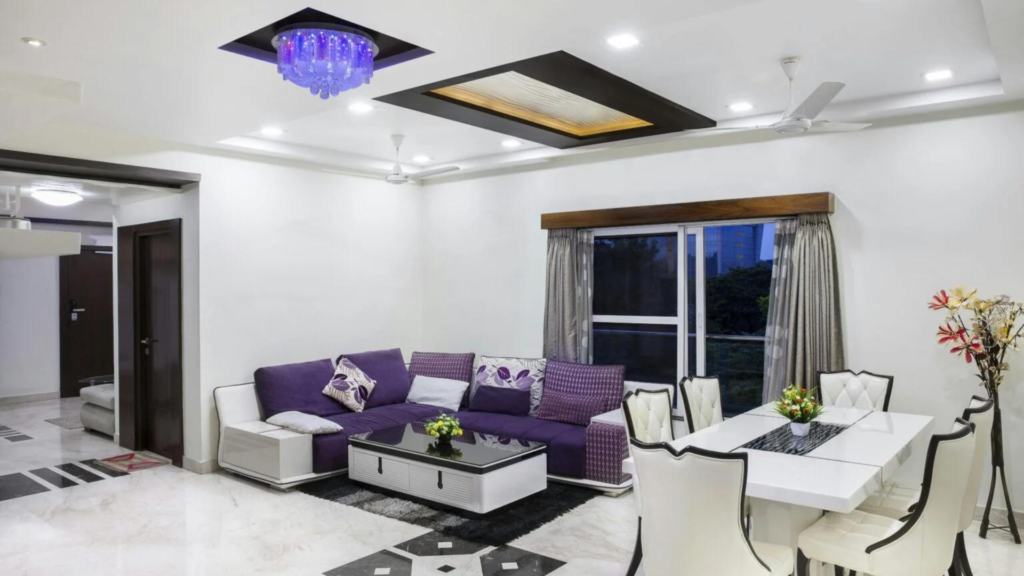
The Best Flooring Options for Every Room in Your Home by Best Interior Designer in Rajkot Hashtag Design Studio by Hashtagdesignstudio
Choosing the right flooring for your home is a crucial decision that impacts not only the aesthetics but also the functionality, comfort, and maintenance of each room. With various flooring options available in India, it can be challenging to determine which material is best suited for different areas of your home. This comprehensive guide will explore the best flooring options for every room, providing insights into their benefits, drawbacks, and suitable applications to help you make an informed decision.
Visit our portfolio at Best Interior Design to see how we incorporate various flooring options into our designs.
1. Options
The living room is the heart of your home, where you entertain guests, relax with family, and spend a significant amount of time. The flooring in this space should be durable, comfortable, and visually appealing.
Top Flooring Options:
a. Vitrified Tiles
Vitrified tiles are a popular choice in India for their durability, low maintenance, and wide range of designs.
Benefits:
- Aesthetics: Available in various colors, patterns, and textures.
- Durability: Resistant to stains, scratches, and moisture.
- Maintenance: Easy to clean and maintain.
Drawbacks:
- Cost: Can be expensive depending on the design and quality.
- Cold Surface: Feels cold underfoot, especially in colder climates.
For more information, check out our referral blog on Vitrified Tiles Benefits.
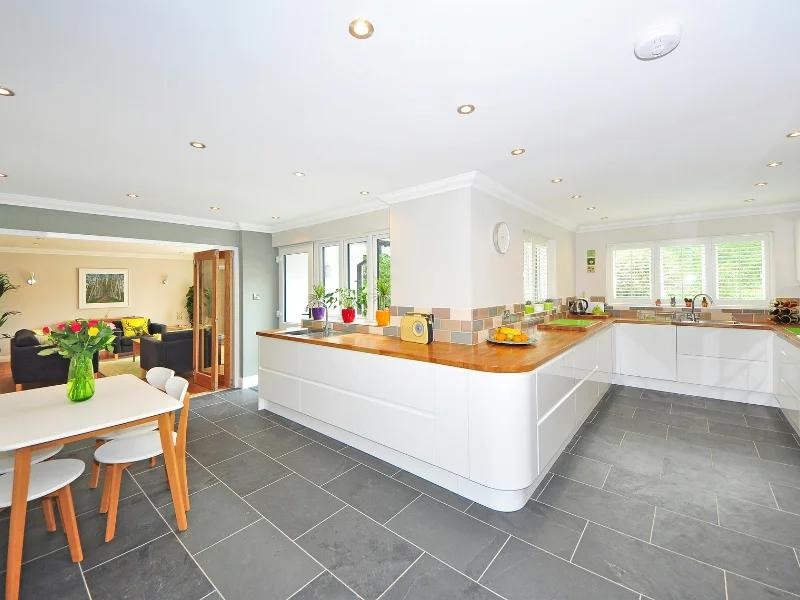
b. Marble Flooring
Marble flooring adds a touch of luxury and elegance to the living room, making it a popular choice in Indian homes.
Benefits:
- Aesthetics: Offers a premium and elegant look.
- Durability: Long-lasting and can be polished to restore shine.
- Value: Increases the resale value of your home.
Drawbacks:
- Cost: Can be expensive to install and maintain.
- Maintenance: Requires regular polishing and sealing to prevent stains.
For more insights, read our referral blog on Marble Flooring Pros and Cons.
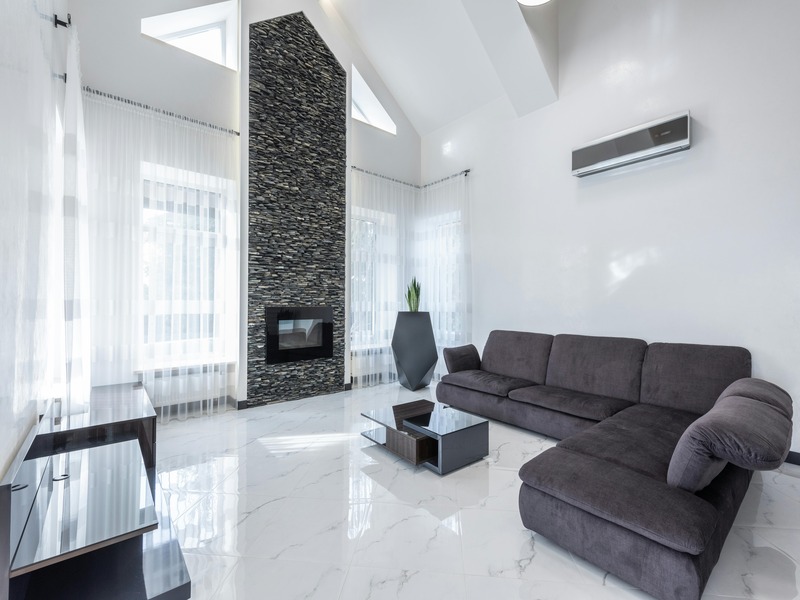
c. Laminate Flooring
Laminate flooring is a budget-friendly option that mimics the look of stone, offering similar aesthetics with added durability.
Benefits:
- Cost-Effective: Less expensive than marble.
- Durability: Resistant to scratches, dents, and fading.
- Easy Installation: Can be installed as a floating floor.
Drawbacks:
- Moisture Sensitivity: Not suitable for high-moisture areas.
- Limited Refinishing: Cannot be refinished.
For more information, check out our referral blog on Laminate Flooring Advantages.
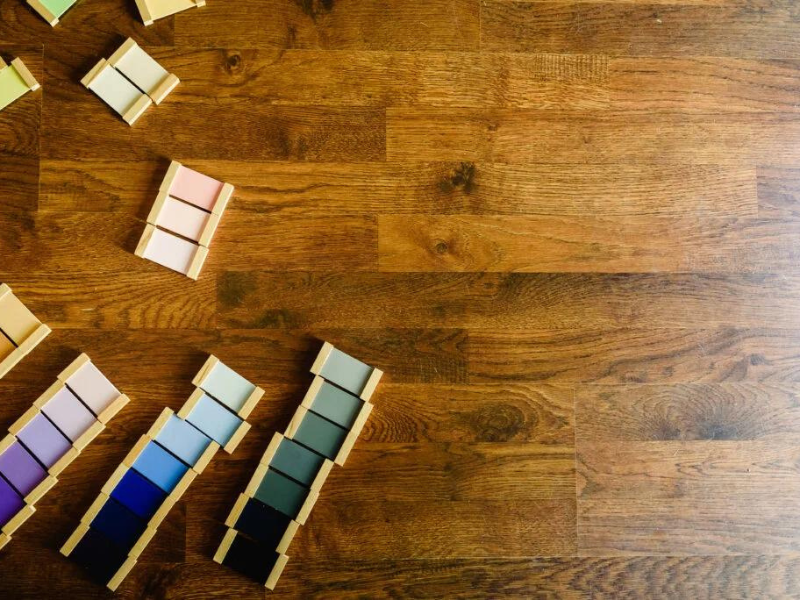
2. Kitchen Flooring Options
The kitchen is a high-traffic area that requires durable, moisture-resistant, and easy-to-clean flooring. Choosing the right material is essential to withstand the demands of cooking and frequent use.
Top Flooring Options:
a. Ceramic Tiles
Ceramic tiles are a popular choice for kitchens in India due to their durability, water resistance, and ease of maintenance.
Benefits:
- Durability: Resistant to scratches, stains, and moisture.
- Variety: Available in various colors, sizes, and patterns.
- Easy Maintenance: Easy to clean and maintain.
Drawbacks:
- Hardness: Can be uncomfortable to stand on for long periods.
- Cold Surface: Feels cold underfoot, especially in colder climates.
For more insights, read our referral blog on Ceramic Tile Benefits.
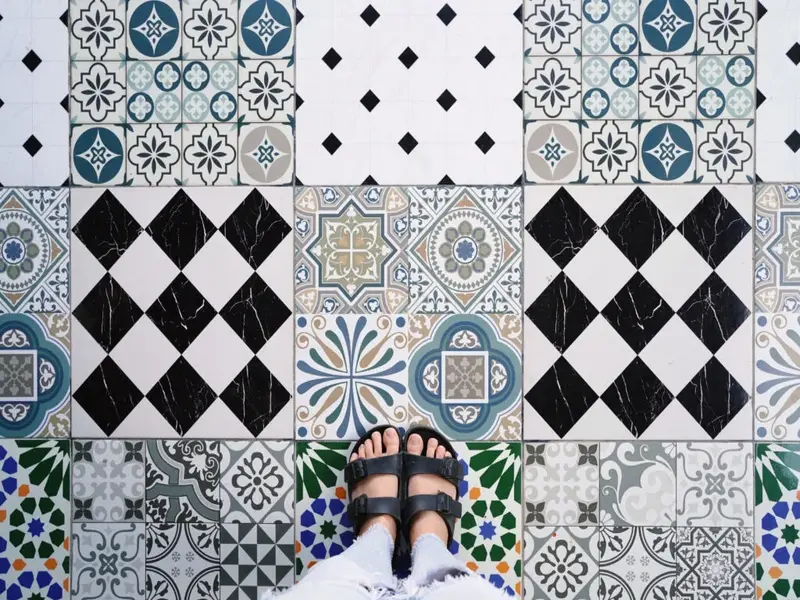
b. Vinyl Flooring
Vinyl flooring is a versatile and budget-friendly option that mimics the look of natural materials like stone.
Benefits:
- Waterproof: Highly resistant to moisture and spills.
- Durability: Resistant to scratches, dents, and stains.
- Comfort: Softer and warmer underfoot than tile.
Drawbacks:
- Appearance: May not look as premium as natural materials.
- Environmental Impact: Some types of vinyl are not eco-friendly.
For more information, check out our referral blog on Vinyl Flooring Advantages.
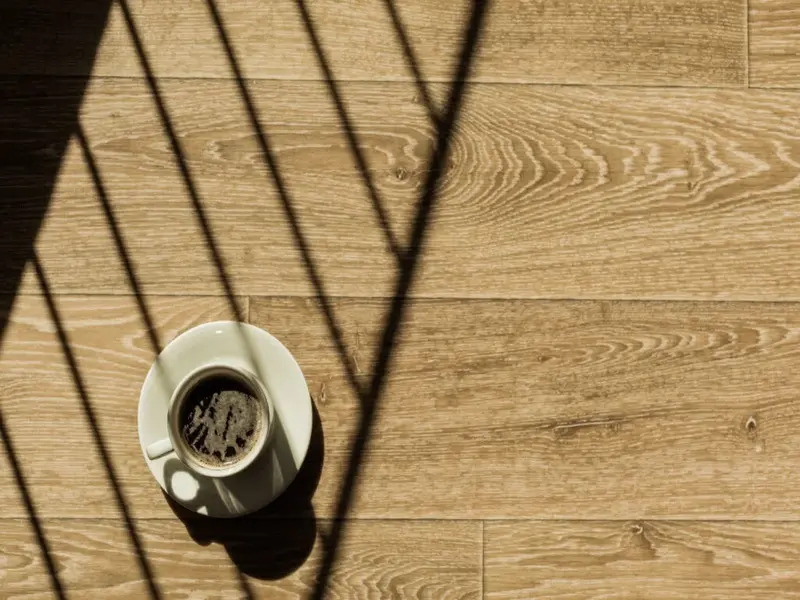
c. Granite Flooring
Granite flooring is durable and adds a touch of luxury to the kitchen, making it a popular choice in Indian homes.
Benefits:
- Aesthetics: Offers a premium and elegant look.
- Durability: Long-lasting and resistant to stains and scratches.
- Value: Increases the resale value of your home.
Drawbacks:
- Cost: Can be expensive to install and maintain.
- Maintenance: Requires regular sealing to prevent stains.
For more insights, read our referral blog on Granite Flooring Benefits.
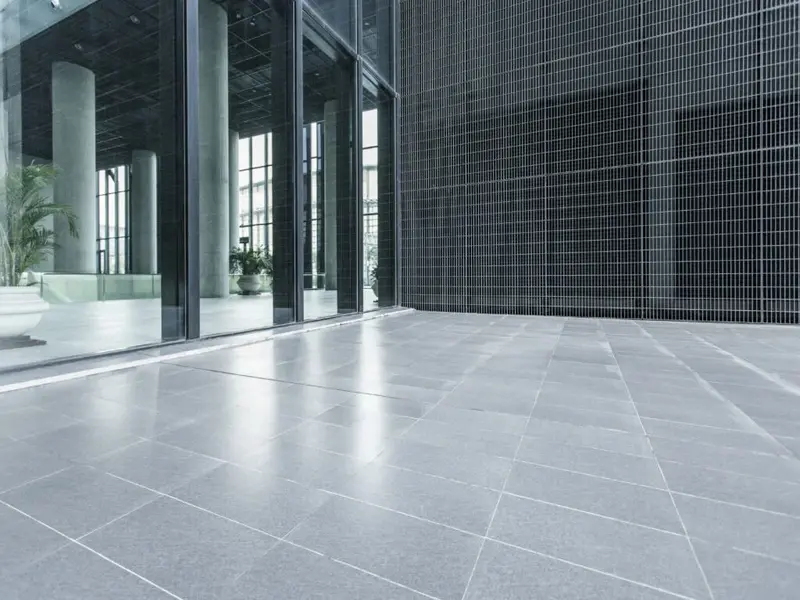
3. Bathroom Flooring Options
The bathroom is a high-moisture area that requires water-resistant, durable, and easy-to-clean flooring. Choosing the right material is essential to prevent water damage and maintain a hygienic environment.
Top Flooring Options:
a. Porcelain Tiles
Porcelain tiles are a popular choice for bathrooms due to their water resistance, durability, and low maintenance.
Benefits:
- Waterproof: Highly resistant to water and moisture.
- Durability: Resistant to scratches, stains, and wear.
- Variety: Available in various colors, sizes, and patterns.
Drawbacks:
- Cold Surface: Feels cold underfoot.
- Hardness: Can be uncomfortable to stand on for long periods.
For more insights, read our referral blog on Porcelain Tile Benefits.
b. Vinyl Flooring
Vinyl flooring is a budget-friendly and water-resistant option that is suitable for bathrooms.
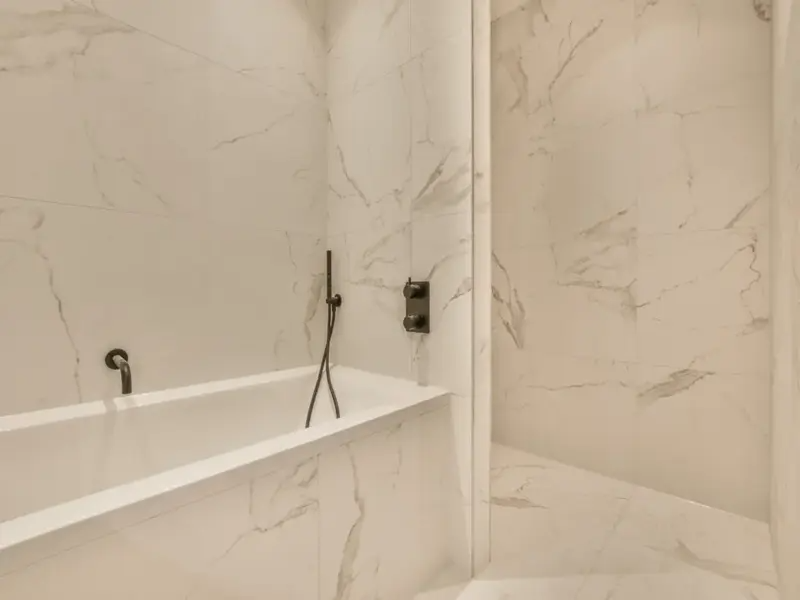
Benefits:
- Waterproof: Highly resistant to moisture and water.
- Durability: Resistant to scratches, dents, and stains.
- Comfort: Softer and warmer underfoot than tile.
Drawbacks:
- Appearance: May not look as premium as natural materials.
- Environmental Impact: Some types of vinyl are not eco-friendly.
For more information, check out our referral blog on Vinyl Flooring Advantages.
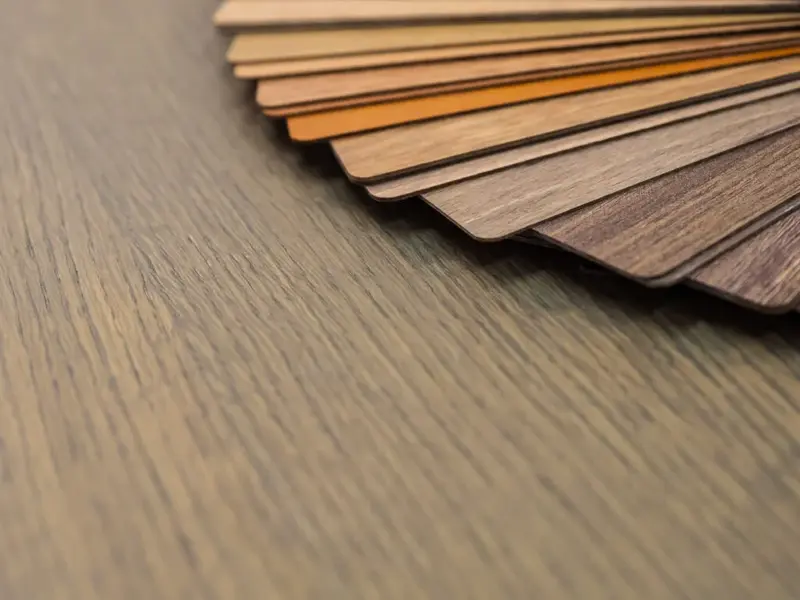
c. Natural Stone
Natural stone, such as marble or granite, adds a luxurious and timeless look to the bathroom.
Benefits:
- Aesthetics: Adds a premium and elegant feel to the bathroom.
- Durability: Long-lasting and durable.
- Value: Increases the resale value of your home.
Drawbacks:
- Cost: Can be expensive to install.
- Maintenance: Requires sealing and regular maintenance to prevent stains and water damage.
For more insights, read our referral blog on Natural Stone Flooring.
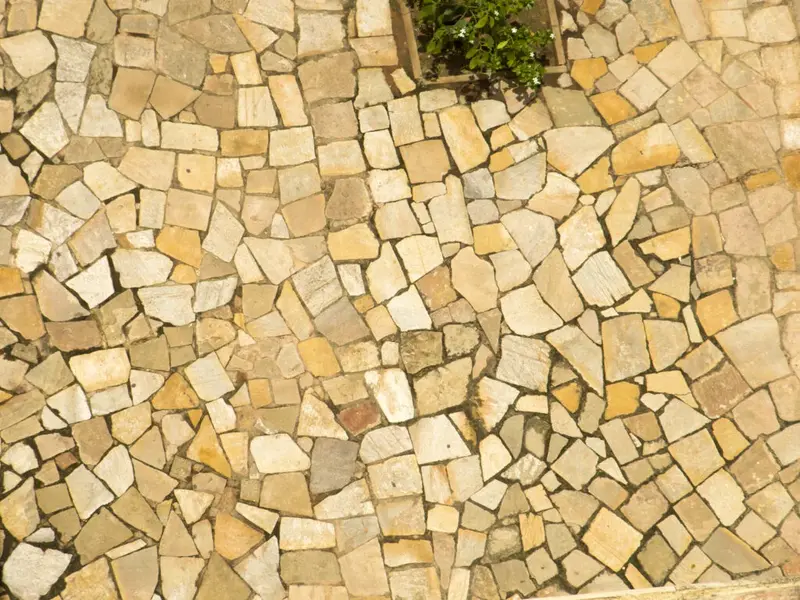
4. Home Office Flooring Options
The home office should be a productive and comfortable space, and the right flooring can contribute to a conducive work environment. Consider materials that offer durability and comfort.
Top Flooring Options:
a. Laminate Flooring
Laminate flooring is a durable and cost-effective option for home offices, offering a professional look with added durability.
Benefits:
- Cost-Effective: Less expensive than natural stone.
- Durability: Resistant to scratches, dents, and fading.
- Easy Installation: Can be installed as a floating floor.
Drawbacks:
- Moisture Sensitivity: Not suitable for high-moisture areas.
- Limited Refinishing: Cannot be refinished.
For more insights, read our referral blog on Laminate Flooring Advantages.
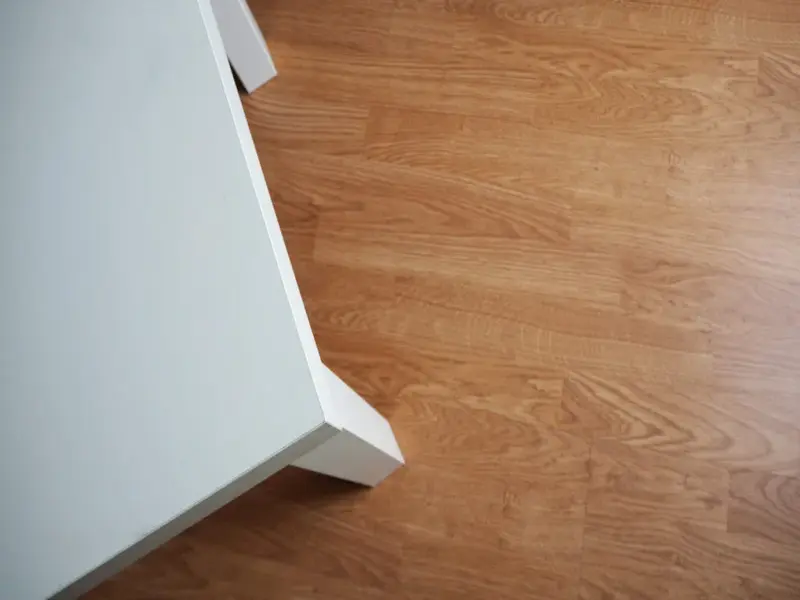
b. Carpet Tiles
Carpet tiles offer flexibility, comfort, and easy maintenance, making them an excellent choice for home offices.
Benefits:
- Comfort: Soft and warm underfoot.
- Easy Maintenance: Individual tiles can be replaced if damaged.
- Versatility: Available in various colors and patterns.
Drawbacks:
- Stain Sensitivity: Can stain easily if not treated with stain-resistant finishes.
- Seams: Visible seams between tiles may not be as aesthetically pleasing as wall-to-wall carpet.
For more tips, check out our referral blog on Choosing Carpet Tiles.
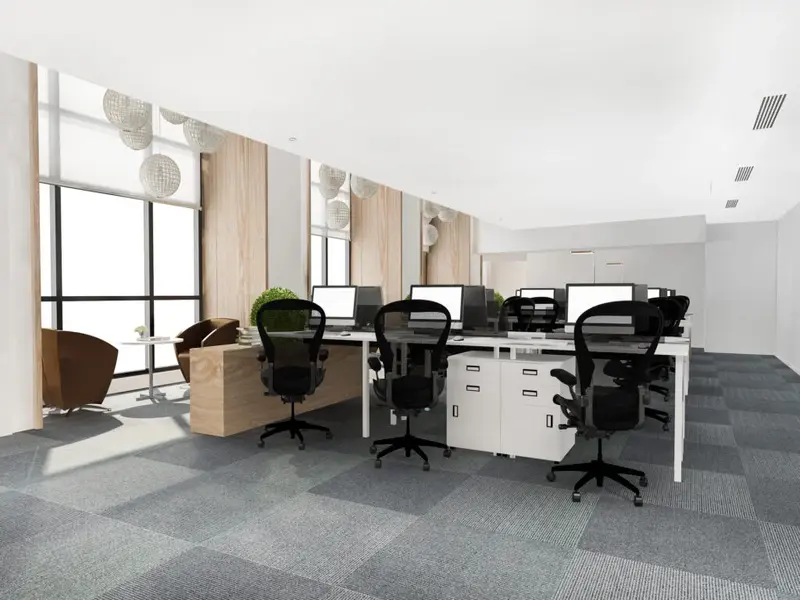
5. Entryway and Hallway Flooring Options
The entryway and hallway experience high foot traffic, so the flooring in these areas should be durable, easy to clean, and visually appealing.
Top Flooring Options:
a. Tile Flooring
Tile flooring is a durable and low-maintenance option for entryways and hallways, offering a variety of styles and designs.
Benefits:
- Durability: Resistant to scratches, stains, and moisture.
- Easy Maintenance: Easy to clean and maintain.
- Variety: Available in various colors, sizes, and patterns.
Drawbacks:
- Cold Surface: Feels cold underfoot, especially in colder climates.
- Hardness: Can be uncomfortable to stand on for long periods.
For more insights, read our referral blog on Tile Flooring Options.
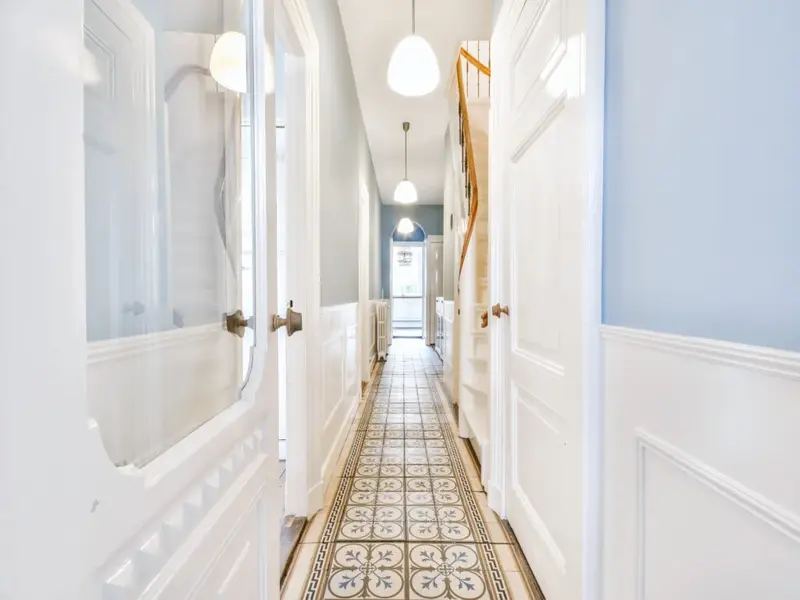
b. Vinyl Flooring
Vinyl flooring is a versatile and budget-friendly option that mimics the look of natural materials, making it suitable for high-traffic areas.
Benefits:
- Waterproof: Highly resistant to moisture and spills.
- Durability: Resistant to scratches, dents, and stains.
- Comfort: Softer and warmer underfoot than tile.
Drawbacks:
- Appearance: May not look as premium as natural materials.
- Environmental Impact: Some types of vinyl are not eco-friendly.
For more information, visit our referral blog on Vinyl Flooring Advantages.
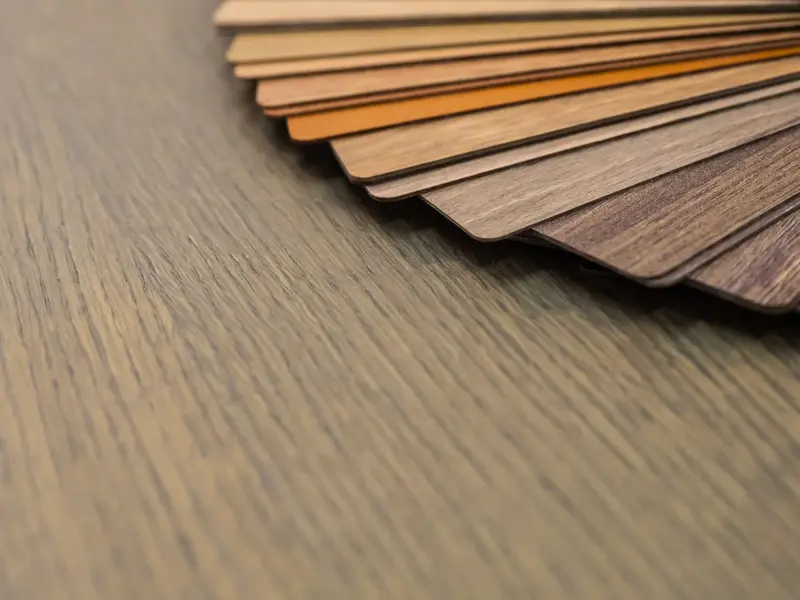
6. Basement Flooring Options
Basements are often prone to moisture and temperature fluctuations, so the flooring in this area should be moisture-resistant, durable, and comfortable.
Top Flooring Options:
a. Luxury Vinyl Plank (LVP)
Luxury vinyl plank is a popular choice for basements due to its water resistance, durability, and realistic appearance.
Benefits:
- Waterproof: Highly resistant to moisture and spills.
- Durability: Resistant to scratches, dents, and stains.
- Aesthetics: Mimics the look of natural stone.
Drawbacks:
- Environmental Impact: Some types of vinyl are not eco-friendly.
- Installation: Requires proper subfloor preparation.
For more information, visit our referral blog on Luxury Vinyl Plank.

b. Ceramic Tile
Ceramic tile is a durable and moisture-resistant option for basements, offering a variety of styles and designs.
Benefits:
- Waterproof: Highly resistant to moisture and water.
- Durability: Resistant to scratches, stains, and wear.
- Variety: Available in various colors, sizes, and patterns.
Drawbacks:
- Cold Surface: Feels cold underfoot.
- Hardness: Can be uncomfortable to stand on for long periods.
For more tips, read our referral blog on Choosing Ceramic Tile.
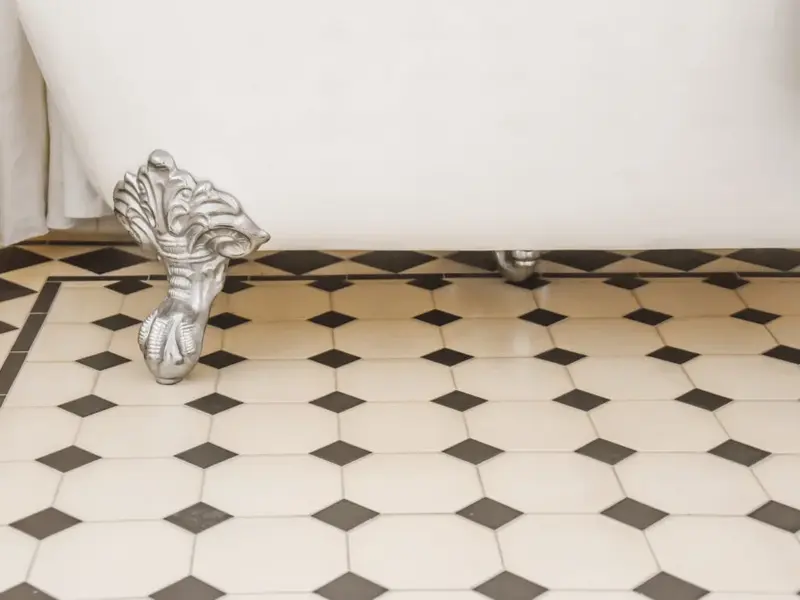
c. Carpet
Carpet adds warmth and comfort to basements, making them more inviting and cozy.
Benefits:
- Comfort: Soft and warm underfoot.
- Variety: Wide range of colors and styles.
- Sound Absorption: Reduces noise levels.
Drawbacks:
- Moisture Sensitivity: Prone to mold and mildew in high-moisture areas.
- Maintenance: Requires regular vacuuming and occasional deep cleaning.
For more insights, check out our referral blog on Carpet Options for Basements.
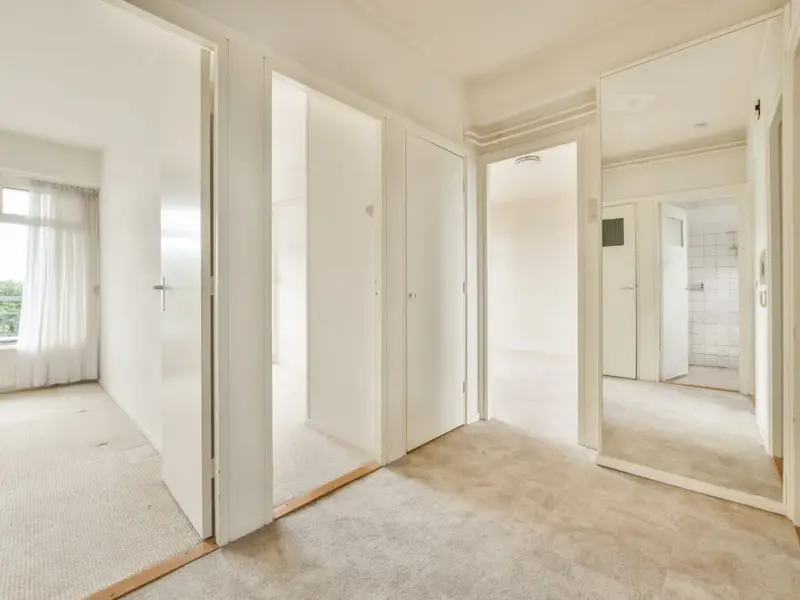
7. Laundry Room Flooring Options
The laundry room requires durable, moisture-resistant, and easy-to-clean flooring to withstand the demands of laundry tasks.
Top Flooring Options:
a. Vinyl Flooring
Vinyl flooring is a versatile and budget-friendly option for laundry rooms, offering water resistance and durability.
Benefits:
- Waterproof: Highly resistant to moisture and spills.
- Durability: Resistant to scratches, dents, and stains.
- Comfort: Softer and warmer underfoot than tile.
Drawbacks:
- Appearance: May not look as premium as natural materials.
- Environmental Impact: Some types of vinyl are not eco-friendly.
For more insights, read our referral blog on Vinyl Flooring for Laundry Rooms.

b. Tile Flooring
Tile flooring is a durable and low-maintenance option for laundry rooms, offering a variety of styles and designs.
Benefits:
- Waterproof: Highly resistant to moisture and water.
- Durability: Resistant to scratches, stains, and wear.
- Easy Maintenance: Easy to clean and maintain.
Drawbacks:
- Cold Surface: Feels cold underfoot, especially in colder climates.
- Hardness: Can be uncomfortable to stand on for long periods.
For more tips, visit our referral blog on Tile Flooring for Laundry Rooms.

c. Concrete Flooring
Concrete flooring is a durable and moisture-resistant option for laundry rooms, offering a modern and industrial look.
Benefits:
- Durability: Highly resistant to wear and tear.
- Waterproof: Resistant to moisture and water.
- Low Maintenance: Easy to clean and maintain.
Drawbacks:
- Cold Surface: Feels cold underfoot.
- Hardness: Can be uncomfortable to stand on for long periods.
For more information, visit our referral blog on Concrete Flooring Options.
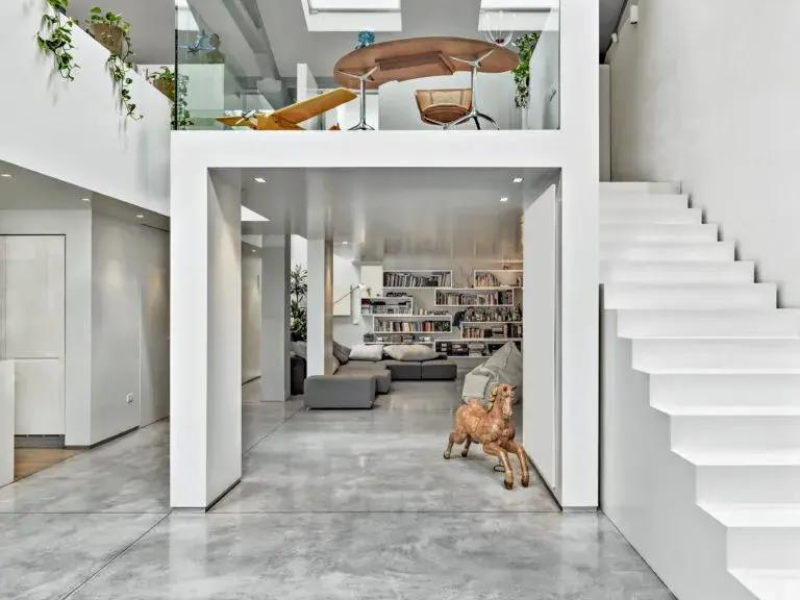
Tips for Choosing the Right Flooring
Choosing the right flooring involves more than just selecting a material that looks good. Here are some additional tips to help you make the best choice for each room in your home:
1. Consider Durability
Consider the durability of the flooring material, especially in high-traffic areas like entryways and hallways. Materials like ceramic tile, vinyl flooring, and laminate are durable and can withstand heavy foot traffic without showing wear and tear quickly.
2. Evaluate Maintenance Requirements
Evaluate the maintenance requirements of each flooring option. For instance, natural materials like marble and granite require regular sealing to maintain their appearance and prevent stains. On the other hand, materials like vinyl and laminate flooring are easier to clean and maintain with regular sweeping and occasional mopping.
3. Factor in Comfort and Safety
Consider comfort and safety, especially in areas where you spend a lot of time standing, such as the kitchen. Flooring materials like vinyl offer softer surfaces underfoot compared to ceramic tiles, making them more comfortable for extended periods of standing.
4. Think About Aesthetics and Style
Think about the overall aesthetics and style of your home. Each flooring option contributes differently to the ambiance of a room. For example, marble flooring adds warmth and elegance, while ceramic tiles offer versatility with various colors and patterns.
5. Budget Considerations
Lastly, consider your budget constraints. Some materials like marble can be more expensive upfront but may add long-term value to your home. Alternatively, budget-friendly options like laminate and vinyl flooring offer similar aesthetics at a lower cost.
Conclusion
Choosing the best flooring for every room in your home involves balancing aesthetics, functionality, and practicality. By considering factors such as durability, maintenance requirements, comfort, aesthetics, and budget, you can select flooring options that not only enhance the visual appeal of your home but also meet the specific needs of each room. Whether you opt for the timeless elegance of marble in your living room, the durability of ceramic tiles in your kitchen, or the comfort of carpet in your bedroom, the right flooring choice can significantly impact your home’s overall atmosphere and value.
Visit Best Interior Design to explore more flooring options and see how they can be integrated into stunning interior designs that reflect your style and preferences.
